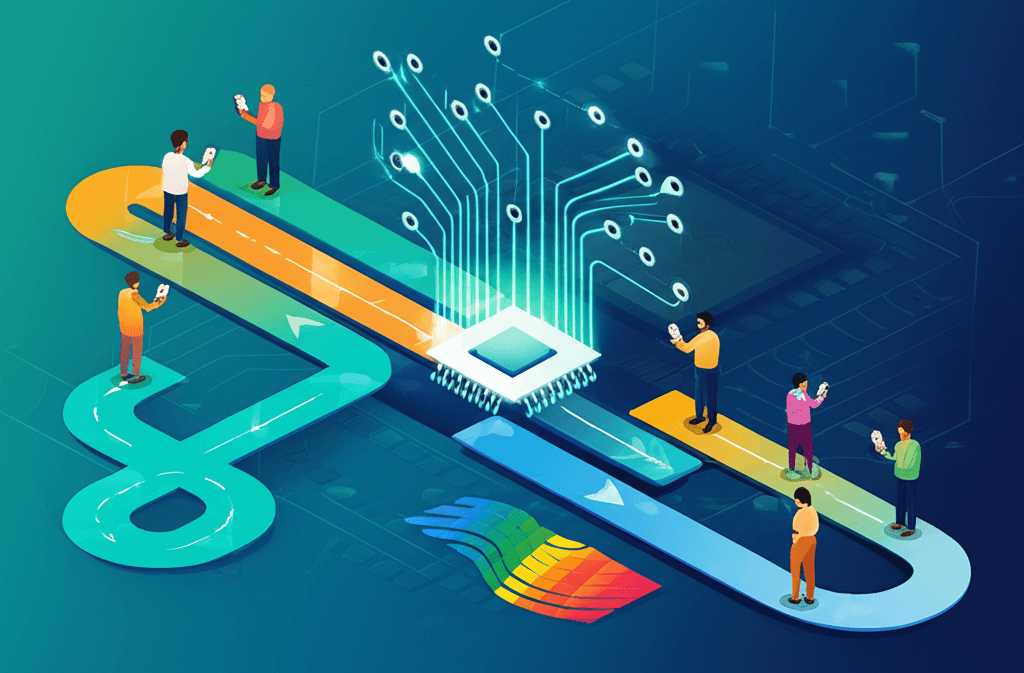Indian Government's AI Halves Public Grievance Resolution Times
India’s "AI for All" strategy redefines public service, dramatically cutting grievance times and bridging linguistic divides.
July 22, 2025

The integration of artificial intelligence into the machinery of government is yielding significant gains in efficiency and responsiveness, a sentiment echoed by IT Secretary Abhishek Singh. The assertion that public grievances are now being addressed with notably greater speed is substantiated by the transformative impact of AI on platforms designed for citizen complaints. India, with its ambitious "AI for All" strategy, is progressively embedding these advanced technologies into its public administration, aiming to create a more accessible and accountable governance framework for its vast population. This push towards AI-driven governance is not merely a futuristic vision but a present-day reality that is reshaping the interaction between citizens and the state, with measurable improvements in service delivery.[1]
A prime example of this technological shift is the Centralised Public Grievance Redress and Monitoring System (CPGRAMS), an online platform that allows citizens to file complaints with various government departments.[2] The infusion of AI into this system has been a game-changer for its efficacy. The average time taken to resolve a grievance has seen a dramatic reduction, dropping from around 30-32 days in 2021 to as low as 14-16 days in recent years.[3][4] This represents a decrease of over 50%, a figure that underscores the profound impact of AI on streamlining bureaucratic processes. The AI tools integrated into CPGRAMS are not just about speed; they enhance the entire grievance lifecycle by automatically categorizing complaints, analyzing sentiment and intent, and even identifying recurring issues for systemic interventions.[5][2] This allows for a more proactive and intelligent approach to public service, where the system can anticipate and address root causes rather than just managing symptoms.[2] The platform now handles a massive volume of complaints, with over 100,000 grievances being redressed monthly.[6]
The application of AI in Indian governance extends beyond just complaint resolution. Another significant initiative is the Bhashini project, which aims to break down the country's vast linguistic barriers.[7] This AI-powered language translation platform is being developed to enable citizens to access digital services and information in their native languages, a crucial step towards digital inclusion in a nation with 22 official languages and hundreds of dialects.[8][7] By providing real-time translation for text and voice, Bhashini is being integrated into various government services and platforms to ensure that language does not become a barrier to accessing essential information and participating in the digital economy.[9][8] This initiative is central to the government's goal of social empowerment, aiming to make technology accessible and beneficial to all, regardless of their linguistic background.[1]
Despite the promising advancements, the integration of AI into governance is not without its challenges. The reliance on vast amounts of data raises significant concerns about privacy and security, necessitating robust data protection frameworks.[10][11] Algorithmic bias is another critical issue, as AI systems trained on skewed data can perpetuate and even amplify existing societal inequalities.[12][11] Ensuring fairness, transparency, and accountability in AI-driven decision-making is paramount to maintaining public trust.[10][12] The Indian government and various policy bodies are actively working on establishing ethical guidelines and regulatory frameworks to address these challenges.[10][12] The goal is to foster a responsible AI ecosystem that prioritizes human rights and democratic values while harnessing the technology's immense potential for societal good.[13]
In conclusion, the assertion that AI is improving efficiency in governance is well-supported by tangible results, particularly in the realm of public grievance redressal in India. The dramatic reduction in resolution times on the CPGRAMS platform is a testament to the power of AI to streamline complex administrative processes and enhance citizen satisfaction.[3][14] Initiatives like the Bhashini project further highlight the commitment to leveraging AI for social empowerment and inclusion.[1][7] While the path forward requires careful navigation of ethical and regulatory challenges, the current trajectory indicates that AI will continue to be a transformative force in making governance more responsive, transparent, and citizen-centric. The continued investment in and responsible deployment of these technologies hold the key to unlocking a more efficient and equitable future for public administration.
Sources
[2]
[3]
[6]
[7]
[10]
[12]
[13]
[14]